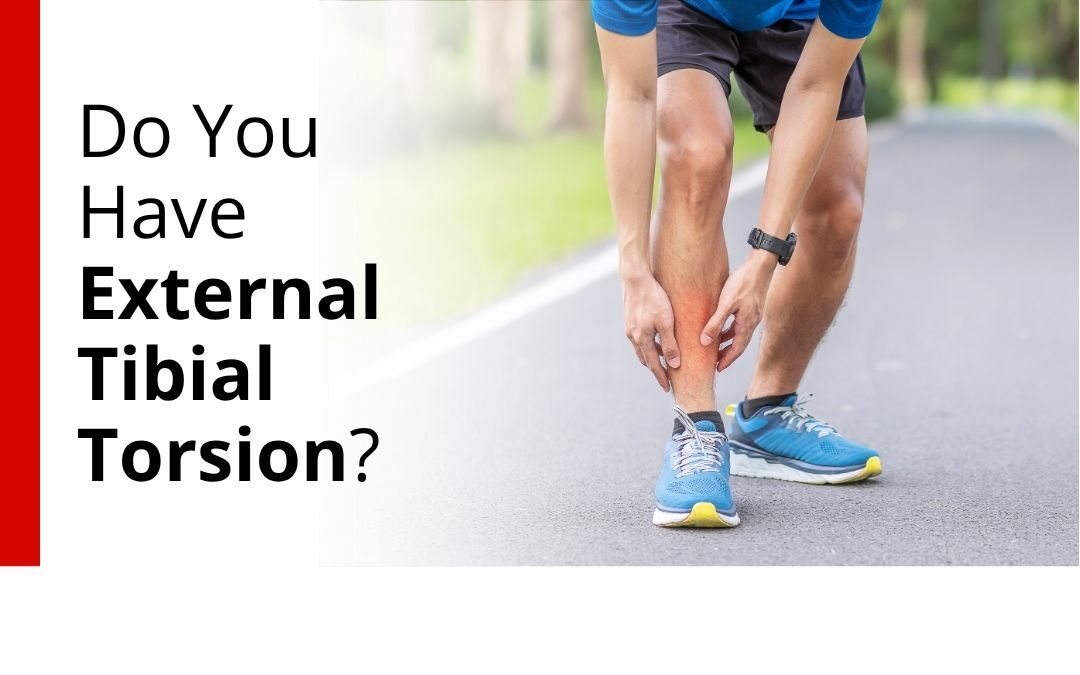Have you been dealing with stubborn knee, foot, hip, or low back pain that just doesn’t seem to go away? Maybe you’ve tried stretching, strengthening, or posture corrections—yet the discomfort keeps coming back. If that sounds familiar, the missing piece of your pain puzzle might actually lie in how your legs are aligned.
One often-overlooked factor behind persistent lower body pain is something called external tibial torsion—a subtle but impactful rotation of the lower leg bone (the tibia). This small twist can influence the way your body moves and absorbs impact, affecting everything from your stride to your spinal alignment.
What Is External Tibial Torsion?
In simple terms, external tibial torsion occurs when your shin bone naturally rotates outward. While this alignment pattern is fairly common—and even genetic in many cases—it can quietly throw off the body’s balance. Imagine the front wheels on your car being slightly turned outward; even a minor misalignment can lead to uneven wear and tear over time.
For your body, that “wear and tear” shows up as joint stress, muscle fatigue, and recurring pain. You might notice your knees turning inward even when your feet are pointing straight ahead, or perhaps you feel extra pressure in your hips or lower back after standing or exercising.
How It Impacts Your Movement and Pain
Every step you take transfers force from your feet up through your knees, hips, and spine. When the tibia rotates outward, it changes how these forces travel through the body. The result? Certain muscles and joints have to work harder to stabilize you.
That extra effort adds up. Over time, external tibial torsion can contribute to:
- Knee discomfort or instability
- Foot or ankle pain (including the development of bunions)
- Hip tightness or soreness
- Low back pain that doesn’t respond to traditional treatment
This is why some people experience pain in multiple areas—even though the real issue starts lower down in the leg.
Real-World Example: When Fitness Isn’t the Fix
We’ve even seen this condition show up in active, fit individuals. One patient—a dedicated runner—began to experience recurring calf pain and stiffness after every run. Despite excellent strength and endurance, their alignment caused subtle changes in stride and foot strike. The solution wasn’t just more stretching—it was assessing their tibial rotation, adjusting their running mechanics, and strengthening the supporting muscles to better align the legs.
Within weeks, their pain decreased, and they were able to keep training without those frustrating post-run flare-ups.
The Chiropractic Approach: Looking Beyond the Site of Pain
Chiropractic care focuses on how the body functions as an integrated system. Rather than chasing the symptom, we look for the cause. If you’re dealing with chronic lower body discomfort, assessing the alignment of your legs and pelvis is often key.
Through gentle adjustments, movement assessments, and customized exercise recommendations, chiropractic care helps:
- Improve joint alignment and mobility
- Restore proper movement mechanics
- Reduce compensations that lead to chronic stress
- Support long-term structural balance
When your body is aligned from the ground up, you move better, recover faster, and feel stronger.
Taking the First Step Toward Relief
If you’ve been battling unexplained pain in your knees, hips, or lower back—and nothing seems to help—it may be time to look below the surface. External tibial torsion might not be something you’ve heard of before, but understanding it could be the turning point in your journey to lasting relief.
Check out our YouTube series to get more information and for a simple test you can perform on yourself at home to assess if you have external tibial torsion.

